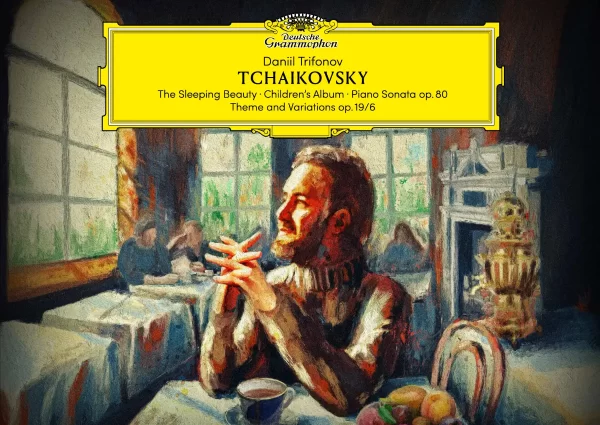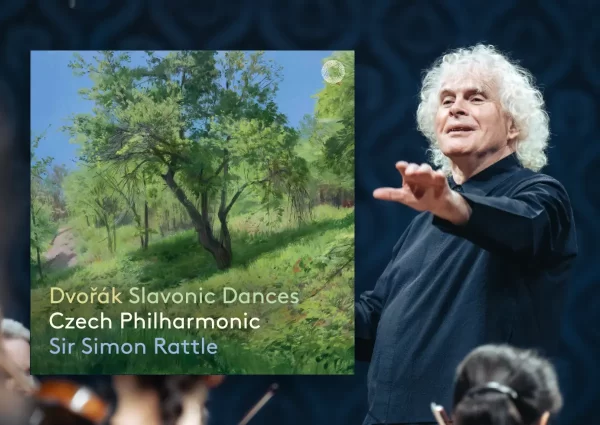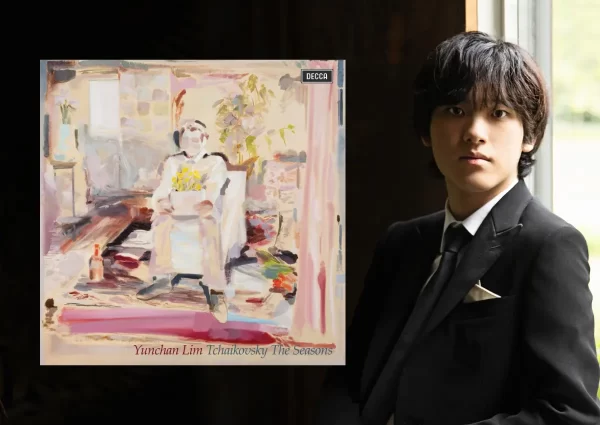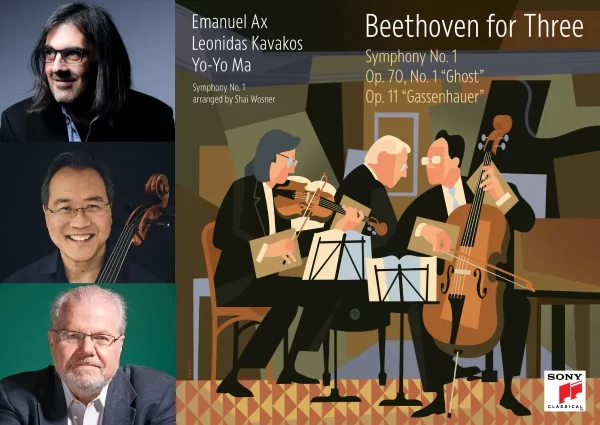Vikingur Ólafsson’s new album is the result of an impromptu meeting with composer György Kurtág. The composer asked to meet the pianist while he was in Budapest for a concert, which surprised Ólafsson, who was shocked to learn the composer knew of him at all. What was originally scheduled as a 10–15-minute meeting lasted over two hours, with Ólafsson playing various works for Kurtág, who offered suggestions and stories “always full of insight and inspiration.” When Ólafsson sat down to write a thank you note for meeting, he instead designed the program heard here, which includes several of Kurtág’s pieces. These works serve as a “compass” that reveals connections between the various selections. Another unique aspect is that the recital is played twice: once on a Steinway concert grand and again on an upright in which a layer of felt covering the strings creates a permanent soft pedal.
Ólafsson’s tone throughout is lean and translucent, chords and inner voices shaped and caressed with the greatest of care. Articulation is crystal clear, even in the loudest passages (though this recital is mostly on the softer side), and the piano is always made to sing. It is gorgeous playing, though after a while its manicured perfection becomes too much of a good thing. And surely the variety of works we hear need different coloring and levels of weight to achieve their fullest expressive potential; The third track is the “Adagio” from Bach’s Keyboard G Major Sonata, followed by “Harmonika: from the third book of Kurtág’s Játékok (Games), followed by Bartók’s “Three Hungarian Folksongs from the Csik District” – Each is treated as exquisite jewel – but the sameness of attack, color, tone, and weight blends the sound world of three quite different composers.
Brahms’ “Intermezzo in E Major” (from 7 Fantasien) follows, and again inhabits the same sound world as the previous five tracks. Zoltán Kocsis’s reading of the Bartók folksongs are just as beautiful, but his articulation is spikier, the piano’s color brighter, as if Kocsis is conjuring the sound of a Hungarian cymbalom. Wilhelm Kempff’s reading of Brahm’s Intermezzo has a similar lyricism and understated passion, but a darker and richer coloring from his instrument.
Related Posts
- Review: Mozart & Contemporaries – Víkingur Ólafsson, Piano
- Review: Vikingur Ólafsson Plays Rameau and Debussy
- Review: Alexandre Kantorow Plays Brahms, Bartók, Liszt
The sameness issue is arguably exacerbated by the repertoire chosen, which, with few exceptions, mostly consists of music of moderate to slow tempo. I found myself longing for Ólafsson to tear into a piece, showing us his overtly virtuosic side. Such variety is found in the first three tracks of his 2018 Bach album, which opens with the “Prelude and Fughetta in G Major,” followed by a brilliantly nimble performance of “Nun freut euch, lieben Christen.”
Rehearing the recital on an upright piano is interesting and does provide some change in tone and weight. There is a heightened sense of intimacy, and I was particularly taken with the new level of vulnerability heard in the upright piano performance of Schumann’s “Träumerei.” Yet in some instances, such as the opening track (Kurtág’s arrangement of Bach’s “Christe, du Lamm Gottes”) the piano’s mechanics (pedals) were so loud it distracted from the music. And there are moments when, perhaps because the pedals are not as responsive, Ólafsson’s clear passagework is muddied. In short, it offers the listener a unique perspective, but I cannot imagine many of us would prefer to the upright piano performances to the Steinway.
I came away from the album filled with admiration for Ólafsson playing, and for the thoughtfulness that went into creating the recital, yet I did not fully connect with the program and its thematic premise. DG’s sound (at least in the Steinway performances) is first-rate in every way, the microphones close to the piano, allowing us to hear the scrupulous preparation that has gone into each piece. Ólafsson’s playing is consistently beautiful and always musical. He does not offer “heart on sleeve” passion, but there is intensity and heartfelt sincerity to every performance. That same sincerity comes through in his liner notes, which are a model of their kind. Certainly, many listeners will welcome the compelling beauty and gentle purity of these performances as a much-needed balm to the hectic busyness of daily life. If the programmatic conception appeals, one need not hesitate.

From Afar
Vikingur Ólafsson – Piano
Deutsche Grammophon, CD 4861681
Recommended Comparisons
Read more classical music reviews or visit The Classic Review Amazon store
Follow Us and Comment:
[wd_hustle id=”HustlePostEmbed” type=”embedded”]







